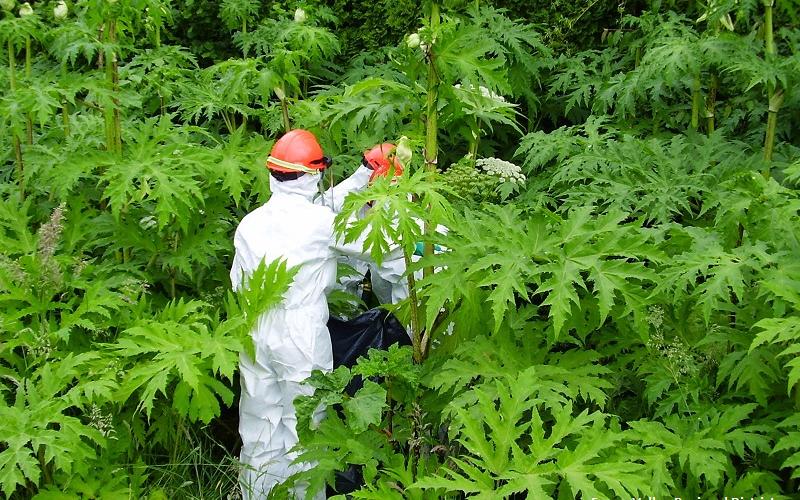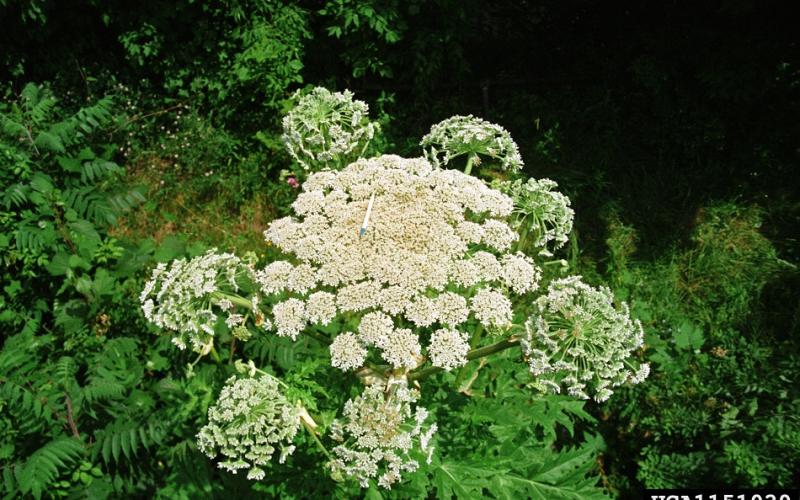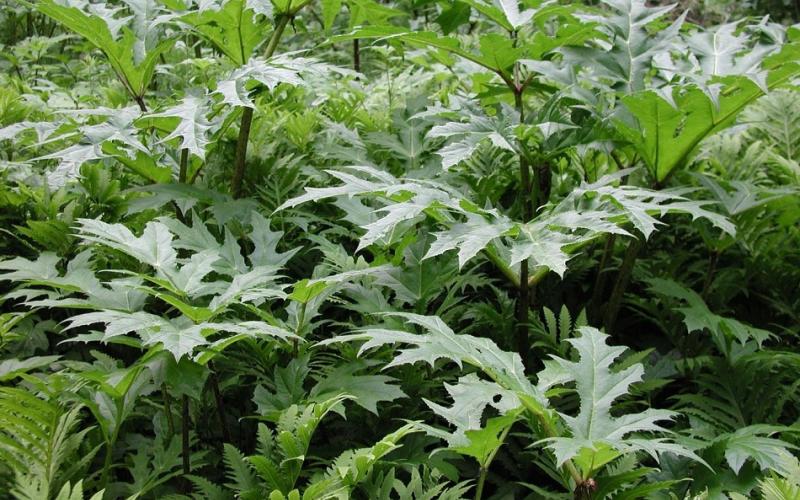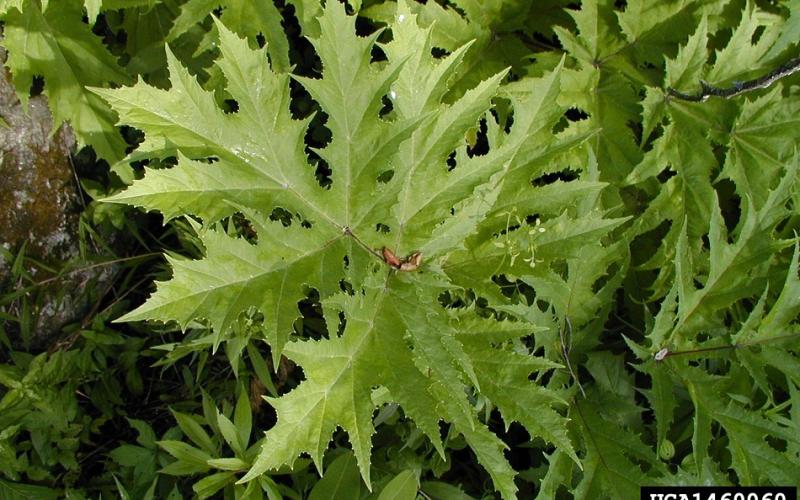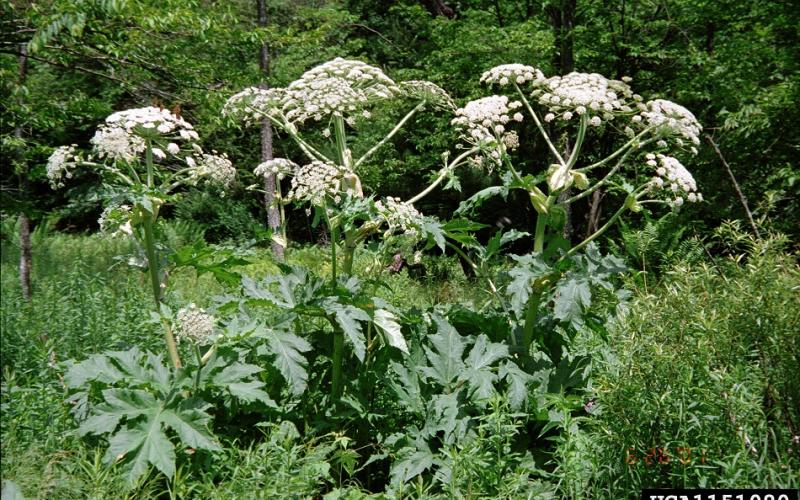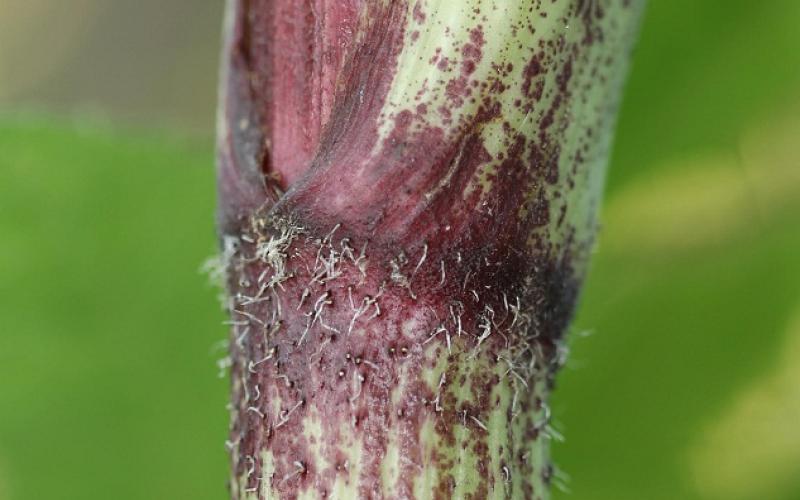Common Name: Giant Hogweed
Scientific Name: Heracleum mantegazzianum Sommier & Levier
Legal Status
All above and below ground parts of the plant must be destroyed. Additionally, no transportation, propagation, or sale of this plant is allowed. Failure to comply may result in an enforcement action by the county or local municipality.
Background
Giant hogweed is a perennial plant native to the Caucasus region of Asia which includes Armenia, Azerbaijan, Georgia, and part of Russia. It was originally introduced to the US as a novelty ornamental which escaped cultivation. Giant hogweed has not yet been discovered in Minnesota but is established in Wisconsin.
Description
- Deeply cut leaves up to five feet across.
- Produces a flowering stalk 10-15 feet tall with large clusters of tiny white flowers 2½ feet across.
- Stalks are two inches in diameter and hollow with purple mottling.
- Stems and leaves are covered in coarse white hairs.
- Contact with the sap in the presence of sunlight can produce painful, burning blisters.
- Cow parsnip (Heracleum maximum) is a similar native look-alike. The leaves are less deeply cut and are between 2-2 ½ feet across. The flowers are also white but flat-topped and no larger than one foot wide. The stem is usually green, but it can have purple marks that are not spots. For photos and more information to compare cow parsnip and giant hogweed, visit Invasive Species Council of Metro Vancouver, and New York State Department of Environmental Conservation.
Habitat
Giant hogweed can be found growing in yards, ditches, disturbed areas, pastures, open wooded areas, and along stream banks. It thrives in sunny locations and is also somewhat shade tolerant.
Means of spread and distribution
It spreads by seed that can be moved by wind, water, wildlife, and humans. Seeds can remain viable in the soil for up to 10 years.
Giant hogweed is a serious public health hazard and can negatively impact soil dynamics, fisheries, and outcompete native plants. When giant hogweed displaces native riparian plants, stream bank erosion increases and streams can become overloaded with silt.
Prevention and management
- Management of giant hogweed requires careful handling and appropriate personal protective equipment. For all management methods, it is important to monitor the site for several years after treatment for newly germinating seedlings or resprouting roots.
- Removing plants by hand is difficult, and dangerous considering the toxic nature of the plant's sap. Mowing can be a good management tool, if repeated throughout the season and over several years, or in coordinated conjunction with herbicide application.
- Well-timed herbicide application can be effective, but numerous applications are usually required. If using herbicide treatments, check with your local University of Minnesota Extension agent, co-op, or certified landscape care expert for assistance and recommendations.
- Grazing cows and pigs, apparently unaffected by the plant's sap, can help to manage but not eliminate the plants.
Toxicity
Contact with the sap and exposure to sunlight can produce painful, burning blisters that can leave scars. Sap coming into contact with the eyes can cause temporary or permanent blindness. Appropriate protective clothing including gloves, goggles and long sleeve shirts should be worn and contact with the stems should be avoided. If sap comes in contact with skin, avoid exposure to sunlight, immediately wash skin with soap and water, and seek medical attention.
